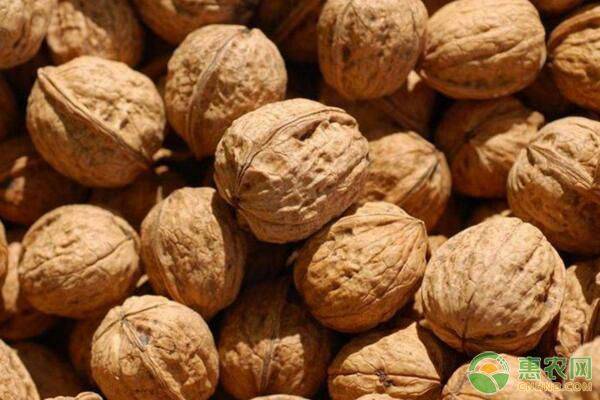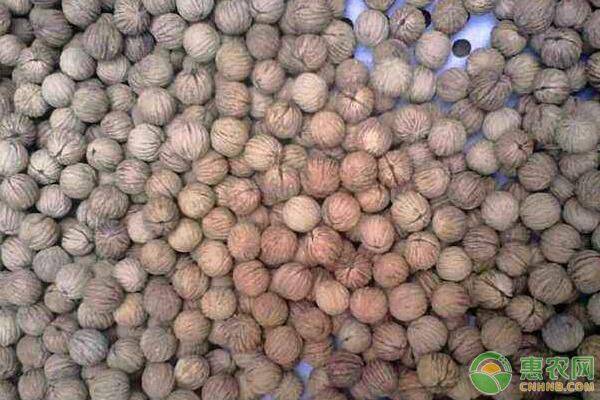Walnut is a walnut plant, and is known as the world's four "dry fruits" with almonds, cashews and hazelnuts. Walnut kernel is rich in nutrients and is beneficial to the human body. It is one of the nut foods popular among the people. Walnuts are generally grafted and propagated. Grafting and breeding is an important technical measure to achieve improved walnut seeding, early fruiting and early yielding. It has the advantages of maintaining excellent maternal characteristics, early results, early yield, high commodity value, and full utilization of wild resources. Next, Xiaobian talks about the grafting and breeding techniques of walnuts.

First, the selection and cultivation of rootstock
1. Selection of rootstocks
As the rootstock for grafting walnuts, the following are used in China: common anvils use ordinary walnut seedlings as rootstocks; walnut stalks; wild walnuts; iron walnuts;
2. Methods for cultivating rootstocks
Live seedlings (enhance the adaptability of the anvil seedlings, save the transplant work, but use more seeds, inconvenient management in the seedling stage); seedbed seedlings (suitable for large-scale seedlings, easy to manage, high seedling rate).

Second, the collection and storage of scion
1. Collection and storage of branching and scion
Branching and scioning should be collected about 20 days before germination or before autumn leaves in the previous year. In the selected elite trees and in the saplings, the healthy and well-developed medium-long development branches were cut out as scions. The quality of the scion is an important factor related to the survival of grafting. The scion should be thick and smooth, with a thickness of about 2 cm, a small core, a large bud, and a fresh skin color. The collected scions are selected from the middle and middle segments, cut into 2 to 3 bud segments, and then simmered in a paraffin solution at 95-100 ° C. This maintains the moisture inside the scion and improves the graft survival rate. After the wax is sealed, it is stored in an environment of 7 ° C or less for each 50 bundles of 50 varieties. Care should be taken to maintain the moisture inside the scion from the scions collected from the field. After shipping to the destination, the first step is to store the wax.
2. Collection and storage of buds
The bud-splicing ear can be cut from the robust development branches issued in the same year 3 to 5 days before the grafting. Immediately after the scion is taken, the compound leaves should be cut off and the petiole of about 1 cm should be kept to reduce the evaporation of water. If the number of grafts is not large, you can also pick them up. If the amount of collection is large, or if it cannot be grafted within a few days after harvest, the scion should be placed in a cool and ventilated place, and the scion should be sealed with wet sand for about 1/2, and water should be sprayed at any time to prevent shrinkage. When collecting scions from the field, they must be moisturized with moist wood chips or moss, and the outside should be wrapped in a purse or sack, and then sealed before being shipped.
Third, the grafting period and method
1. Hard branch grafting
(1) Grafting period
The grafting is carried out during the germination of the spring rootstock buds to the leaf-expanding stage; the buds are often carried out when the new shoots are accelerated in the growing season.
(2) Factors affecting grafting survival
1 The affinity between the rootstock and the scion. The affinity is high, the grafting survival rate is high, and vice versa, the survival rate is low.
2 The robustness of the rootstock and scion and the storage level of nutrients. Plants are robust, vegetative organs are enriched, nutrients are stored in the body, and grafting is easy to survive.
3Injury flow rate: The rootstock has a lot of wounds, and the tissue of the asphyxiation is breathed, which is unfavorable for the formation of healing tissue, which is unfavorable for grafting.
(3) Connection method
The splicing is suitable for rootstocks with older trees and thicker seedlings. It can choose 2~4 years old rootstock with diameter of 3cm or more, cut off at about 15cm from the ground, cut the cross section with a knife, and cut a 5cm long incision with a knife at 1/2 of the cross section. Strictly with 2 to 3 buds, cut the sides into 5~7cm slopes, and then cut 2 full buds after cutting, then open the rootstock and quickly insert the scion In the mouth. The cutting surface with a depth of about 5 mm is suitable for the outside of the rootstock, so that the anvil and the ear are formed in close contact with each other. It is best to use a strong tensile strip to ensure the interface humidity and healing conditions.

Fourth, after the management
1. After grafting, it is necessary to check the germination of the rootstock below the interface, whether the adventitious buds sprout out of the buds, and if so, remove them in time, otherwise it will affect the germination and growth of the buds.
2. When the buds are sprouted, they should be unblocked in time so as not to hinder the thickening of the rootstock and the injury of the buds, which will affect the survival.
3. The growth of the buds grows rapidly after germination. The tender shoots and compound leaves are more likely to cause wind damage. Therefore, when the bud shoots grow up to 20cm, a wooden stick should be tied at the bud to guide the shoots.
4. For the seedlings that survive, in addition to timely cultivating, weeding, fertilizing, and watering management, we must also control pests. In the new shoot growth period, we are often affected by leaf-feeding pests.
For the wonderful pictures and popular comments on the grafting of walnut seeds, you may be interested in the following recommended contents. Welcome to read.
Greenhouse Movable Irrigation System offer uniformity and flexibility in irrigation, while reducing water and labor costs. Available with multiple nozzles, allowing watering and misting options, irrigation booms are adaptable to any crop. Depending on the boom selected, multiple zones can be irrigated with one boom, allowing the grower to effectively grow multiple crops in one house. All booms can be controlled independently or through computerized controls.
Greenhouse Movable Irrigation,Greenhouse Irrigation,Greenhouse Movable Watering,Greenhouse Sprinkler System
JIANGSU SKYPLAN GREENHOUSE TECHNOLOGY CO.,LTD , https://www.greenhousehydroponic.com